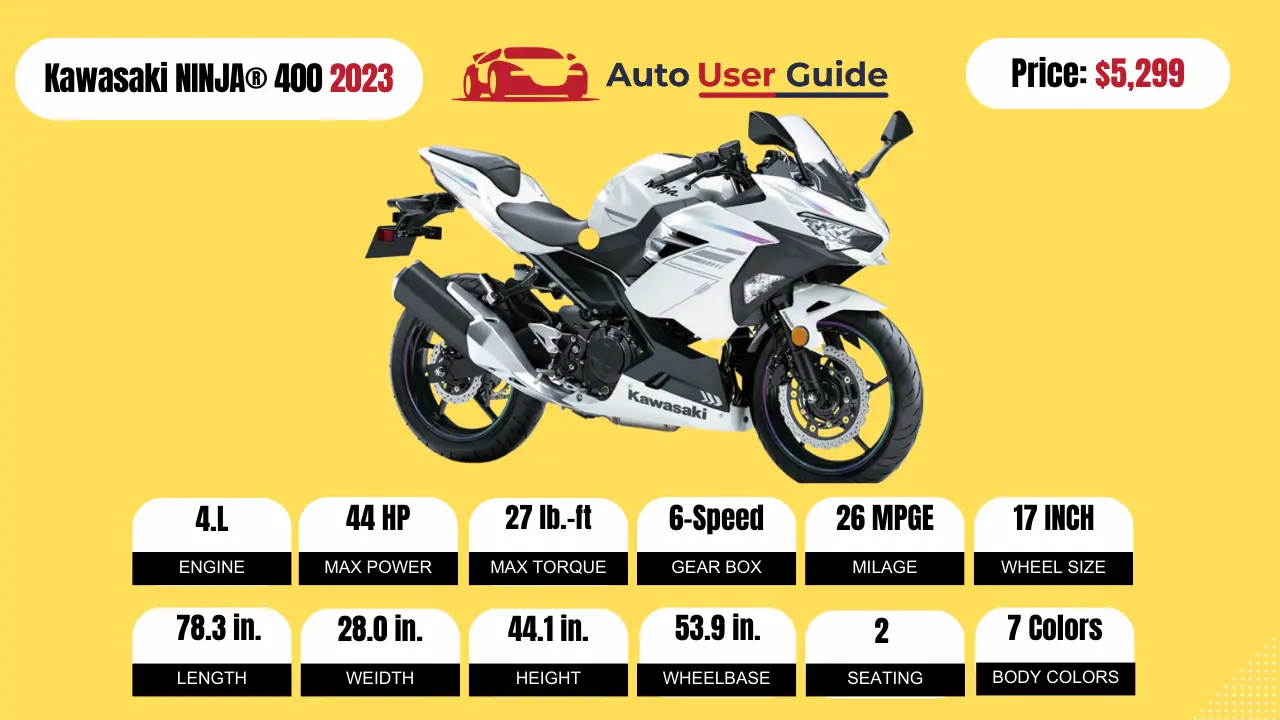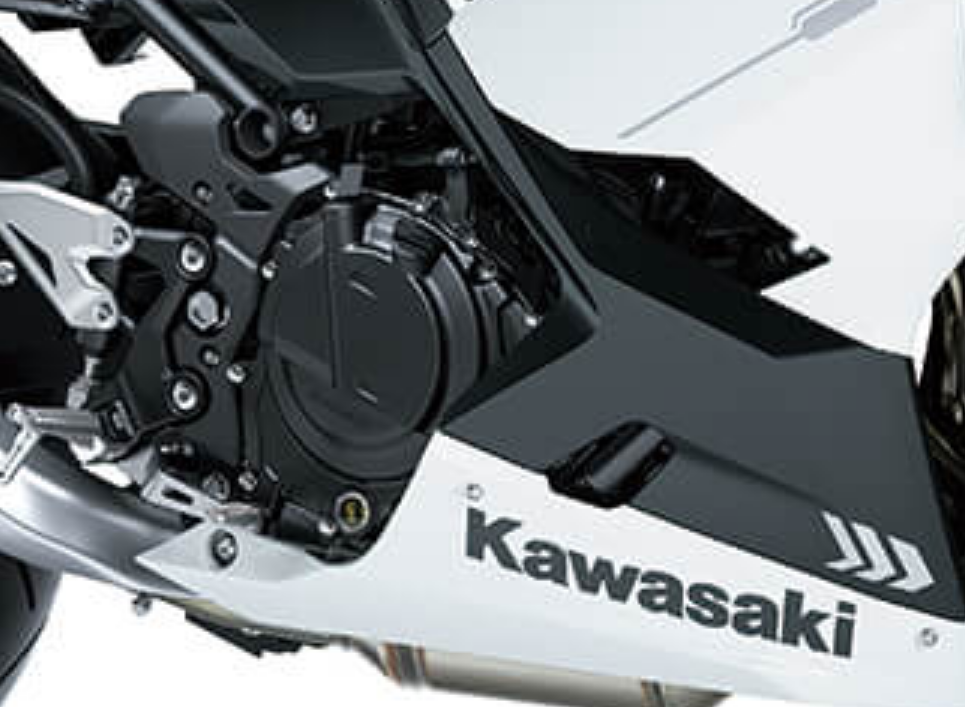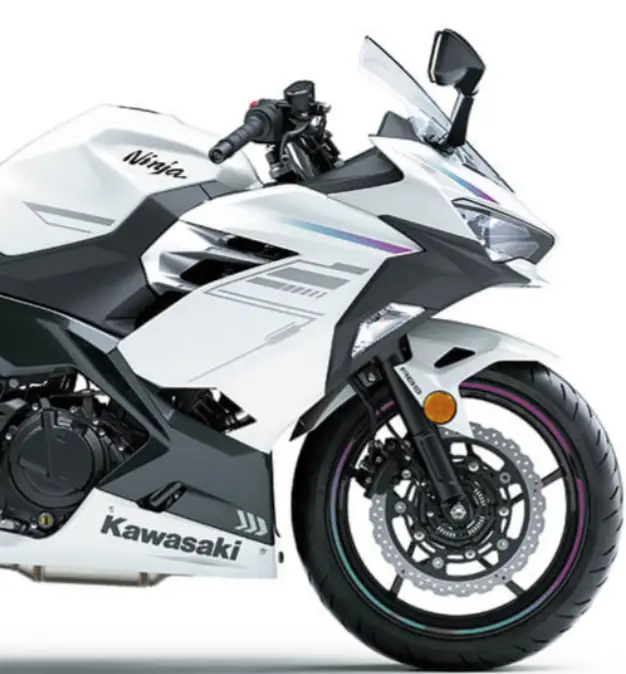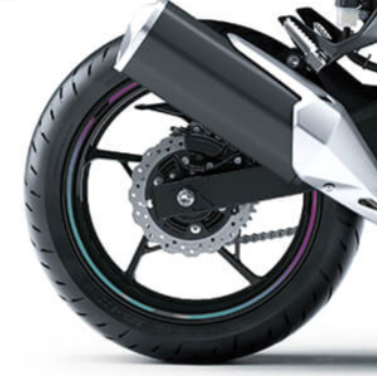2023 Kawasaki NINJA® 400
Motorcycles made by Kawasaki, sometimes known as “Kawis” by devotees, are an exhilarating combination of strength, accuracy, and flair. The lightweight chassis of the NINJA® 400 enables excellent handling in every circumstance. Every ride will draw heads thanks to its aggressive style, which not only looks spectacular but also helps aerodynamics. Here We Will Talk About NINJA® 400 It offers a thrilling balance of speed and control thanks to a snappy 399cc parallel-twin engine. The lightweight chassis of the NINJA® 400 enables excellent handling in every circumstance.
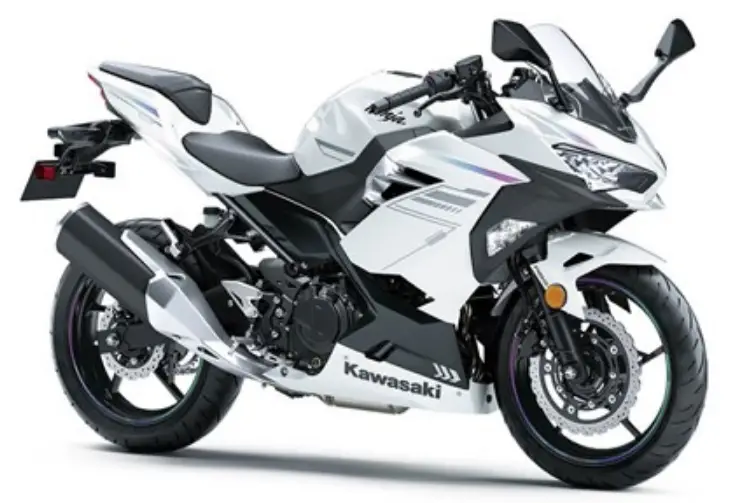
Total Revenue of Kawasaki Company: $2.86 Billion (September 2023)
Units sold in 2023: 254
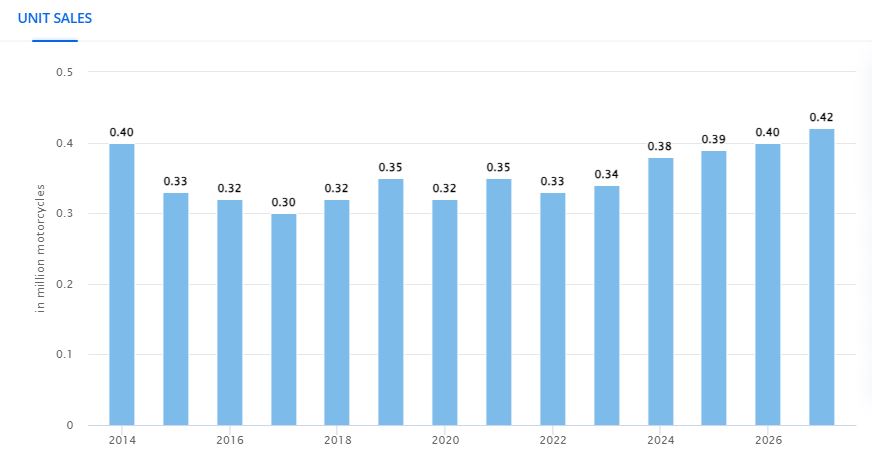
Pricing: $5,299. est.
Colours: Metallic Carbon Gray/Metallic Matte Carbon Gray, Metallic Magnetic Dark Gray/Metallic Matte Twilight Blue, Pearl Blizzard White/Metallic Carbon Gray
https://youtu.be/qBSd0pbtqAU
Power
| Specification | Power |
|---|---|
| Engine | 4-stroke, Parallel Twin, DOHC, liquid-cooled |
| Displacement | 399cc |
| Bore x Stroke | 70.0 x 51.8mm |
| Compression Ratio | 11.5:1 |
| Fuel System | DFI® with dual 32mm throttle bodies |
| Ignition | TCBI w/digital advance |
| Transmission | 6-speed |
| Final Drive | Sealed chain |
| Electronic Rider Aids | ABS |
Performance
| Specification | Performance |
|---|---|
| Front Suspension / Wheel Travel | 41mm hydraulic telescopic fork / 4.7 in |
| Rear Suspension / Wheel Travel | Horizontal back-link with adjustable spring preload / 5.1 in |
| Front Tire | 110/70-17 |
| Rear Tire | 150/60-17 |
| Front Brakes | Single 310mm semi-floating petal-type disc with 2-piston callipers (and ABS) |
| Rear Brakes | Single 220mm petal-type disc with a single-piston calliper (and ABS) |
Features
| Specification | Features |
|---|---|
| Frame Type | Trellis, high-tensile steel |
| Rake/Trail | 24.7° / 3.6 in. |
| Overall Length | 78.3 in |
| Overall Width | 28.0 in |
| Overall Height | 44.1 in |
| Ground Clearance | 5.5 in |
| Seat Height | 30.9 in |
| Curb Weight | 366.0 lb (ABS), 361.6 lb (non-ABS)* |
| Fuel Capacity | 3.7 gal |
| Wheelbase | 53.9 in |
Technology
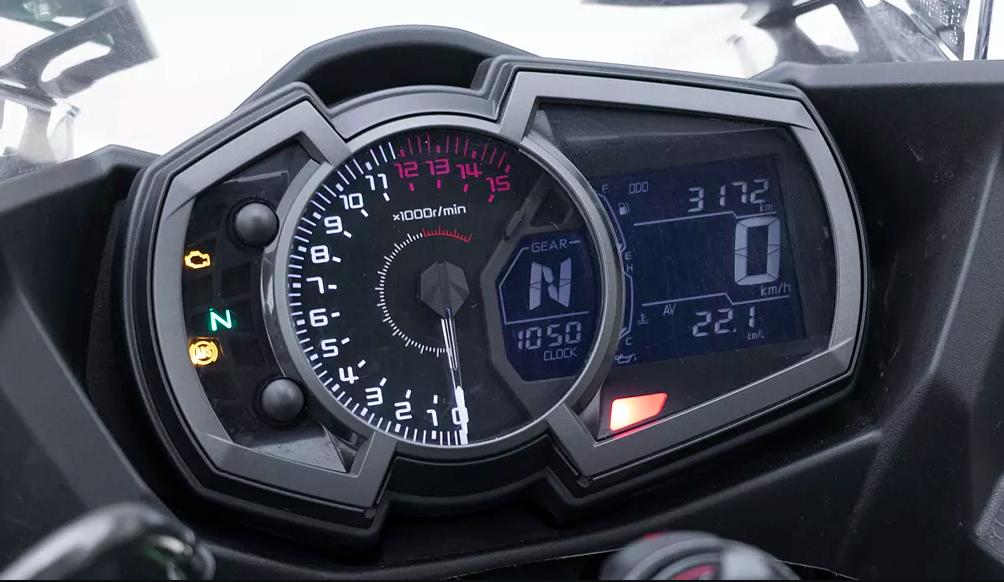
ASSIST & SLIPPER CLUTCH
The Assist & Slipper Clutch uses two different cams—an assist cam and a slipper cam—to move the clutch hub and operation plate either together or apart based on feedback from racing activity. When the clutch hub and operating plate are pulled together to compress the clutch plates, the assist cam acts as a self-servo mechanism. This makes it possible to lessen the overall clutch spring load, which makes operating the clutch feel lighter. Fast downshifts (or unintentional downshifts) can cause excessive engine braking, which triggers the slipper cam, which separates the clutch hub and working plate. This releases pressure from the clutch plates, reducing back torque and lowering the risk of the back tire jumping or sliding. When riding for sport or on the track, this race-style function is extremely helpful.
ECONOMICAL RIDING INDICATOR
Using high-precision electronic control for engine management, Kawasaki models can achieve a high level of fuel efficiency. However, fuel consumption is greatly affected by the throttle use, gear selection, and other elements under the rider’s control. The Economical Riding Indicator is a function that indicates when current riding conditions are consuming a low amount of fuel. The system continuously monitors fuel consumption, regardless of vehicle speed, engine speed, throttle position and other riding conditions. When fuel consumption is low for a given speed (i.e. fuel efficiency is high), an “ECO” mark appears on the instrument panel’s LCD screen. By riding so that the “ECO” mark remains on. fuel consumption can be reduced. Although the “ECO” label may appear under different circumstances depending on the model, riders can boost their fuel efficiency, which is a useful way to extend their cruising range. Additionally, reducing fuel use lessens the harmful effects on the environment.
ABS (ANTI-LOCK BRAKE SYSTEM)
Kawasaki ABS systems continuously track wheel speed using front and rear wheel sensors. The ABS ECU instructs the pump in the ABS unit to vary brake fluid pressure (releasing and reapplying pressure so that traction can be restored) until normal operation resumes should data from either of the sensors indicate that a wheel lock has occurred. ABS provides rider reassurance, which increases riding enjoyment.
ERGO-FIT°
For rider comfort and control, a proper fit is essential. However, based on each rider’s physical characteristics and riding style, the perfect fit differs from rider to rider. An interface system called ERGO-FIT® was created to let riders select the best position for them while riding. A combination of replaceable parts and parts with adjustable positions can be used to adjust several points of the chassis interface, including the handlebar, footpegs, and seat, among others. This makes it possible for a variety of riders to choose a posture that provides comfort and control. They will be able to discover how Kawasaki machines are enjoyable and satisfying to ride when they are at one with their machine. Models differ in terms of adjustable parts and their range of adjustment.
FAQs
The price of the 2023 Kawasaki NINJA® 400 is $5,299 est.
The Kawasaki NINJA® 400 Units sold in 2023 are 0.34 Million.
The Engine Displacement of the Kawasaki NINJA® 400 is 399cc.
The torque of the Kawasaki NINJA® 400 is 37 Nm @ 8000 rpm.
The Overall Height of the Kawasaki NINJA® 400 is 44.1 in.
The ground clearance of the Kawasaki NINJA® 400 is 5.5 in.
The Wheel base of the Kawasaki NINJA® 400 is 53.9 in.
The Fuel Capacity of the Kawasaki NINJA® 400 is 3.7 gal.
The Curb Weight of Kawasaki NINJA® 400 is 366.0 lb (ABS), and 361.6 lb (non-ABS).
The seat height of the Kawasaki NINJA® 400 is 30.9 in.
Conclusion
The 2023 Kawasaki NINJA 400. It offers an exhilarating ride while yet retaining a tolerable fuel efficiency thanks to its 399cc engine. It is a versatile and secure option for riders thanks to its many features and specifications, including the trellis frame, ABS, and adjustable suspension. Both style and accessibility are guaranteed by its streamlined appearance and small size, which also include the low seat height. The 2023 Kawasaki NINJA 400 guarantees an exhilarating and joyful riding experience, regardless of whether you are an experienced rider or new to the world of sportbikes.
Related Posts
Top 5 Best-Selling Kawasaki Heavy Bikes in 2023 | Experts Review
Top 5 Best Selling Ducati HeavyBikes in 2023 | Experts Review
Top 5 Best Selling Honda HeavyBikes in 2023
Top 5 Best-Selling BMW HeavyBikes in 2023

